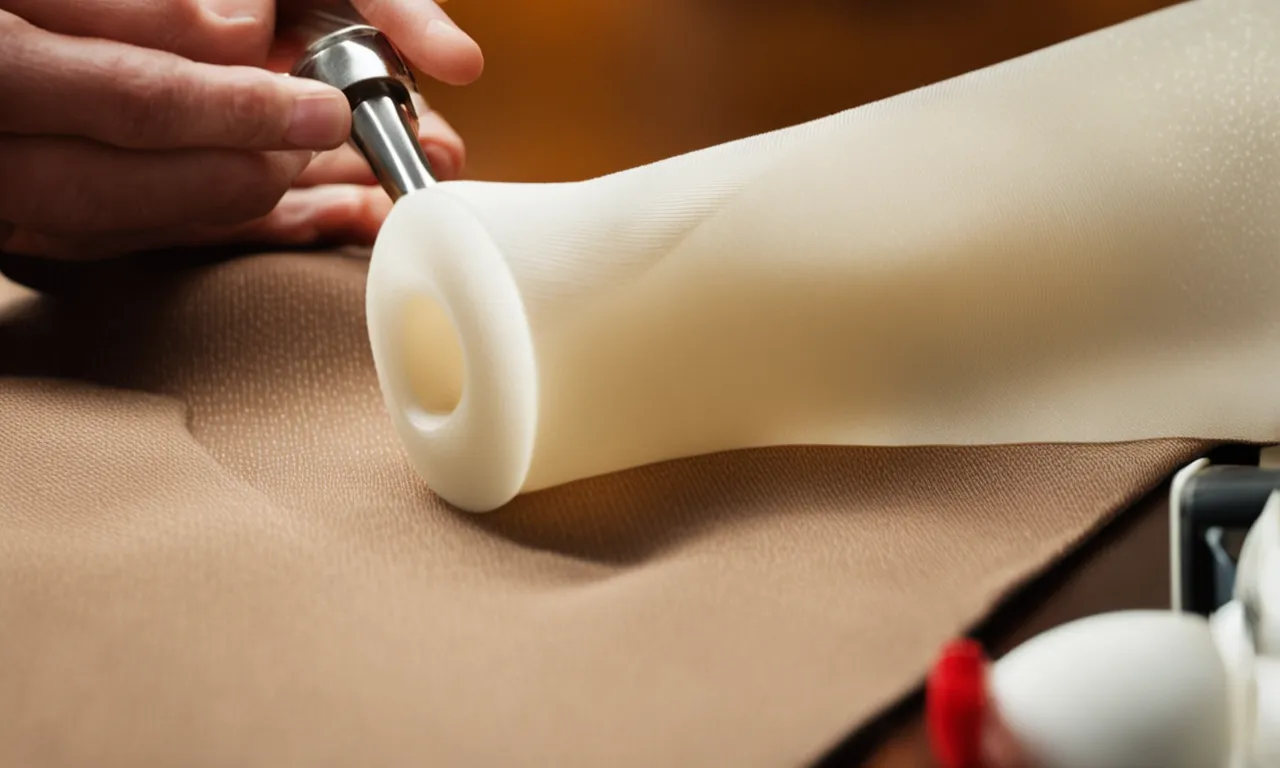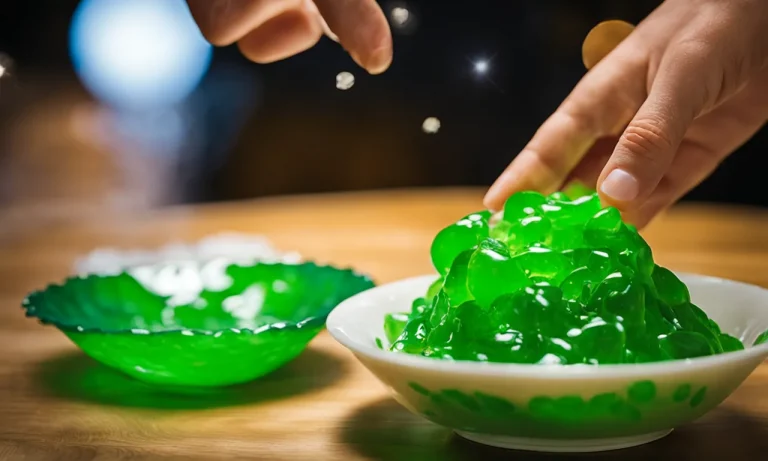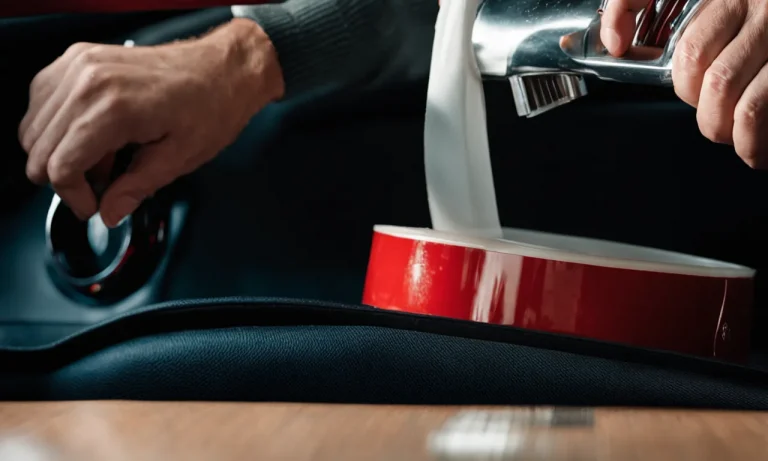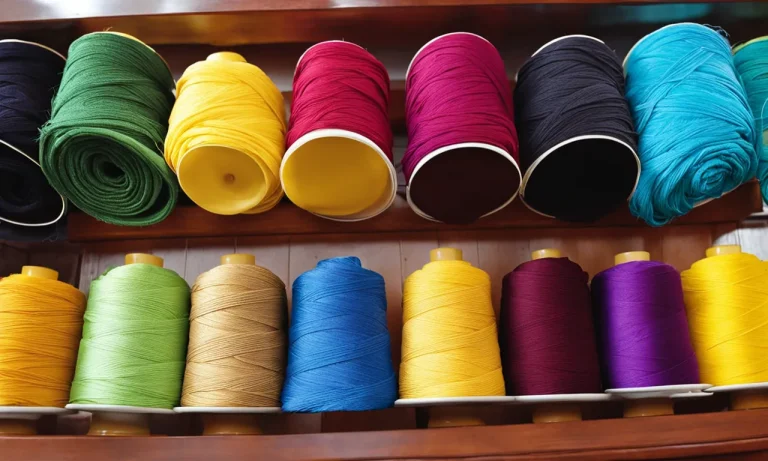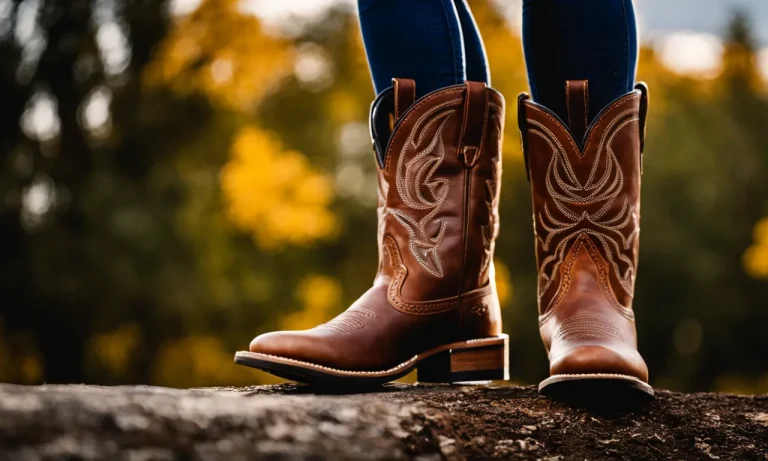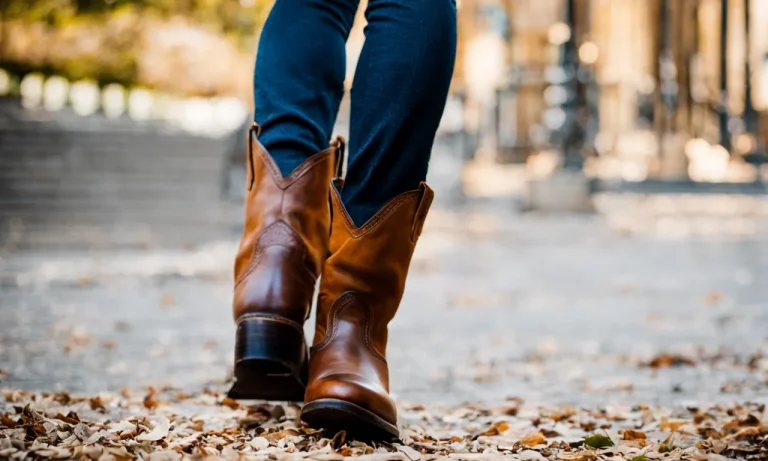The Best Glue For Fabric To Fabric: A Complete Guide
If you enjoy arts and crafts projects that involve fabric, you’ve probably found yourself asking: What’s the best glue for adhering fabric to fabric? Having the right adhesive can make or break your project, ensuring a long-lasting bond that can withstand washing and wearing.
If you’re short on time, here’s a quick answer to your question: Look for fabric glues formulated specifically for bonding fabric, such as Beacon’s Fabri-Tac Permanent Adhesive, Aleene’s Fabric Fusion Peel & Stick Tape, or Dritz 2099 Fabric Glue.
Avoid household glues like hot glue and superglue which can bleach or eat through fabric.
In this comprehensive guide, we’ll explore the top fabric-to-fabric glues to help you achieve a flawless finish for any fabric project.
How Glue Works on Fabric
Understanding how glue works on fabric is essential when choosing the best adhesive for your fabric-to-fabric projects. Different factors come into play, such as fiber composition, permanence of hold, fabric weight and drape, and washing and dry cleaning considerations.
Fiber Composition
The type of fabric you are working with plays a crucial role in determining the suitable glue. Some fabrics, like cotton and polyester, are more receptive to glues and adhesives, while others, like silk and satin, require special adhesives formulated specifically for delicate fabrics.
It is important to consider the fiber composition of your fabric to ensure the glue will bond effectively without causing any damage.
Permanent vs. Temporary Hold
When choosing a glue for fabric-to-fabric bonding, you must consider whether you want a permanent or temporary hold. Permanent glues, such as fabric glue or fabric adhesive tapes, provide a strong and long-lasting bond that can withstand regular wear and washing.
On the other hand, temporary glues, like fabric basting sprays or fusible web, allow for repositioning and can be easily removed or washed away when desired. Consider the intended use of your fabric project and choose the appropriate glue accordingly.
Fabric Weight and Drape
The weight and drape of the fabric also impact the choice of glue. Heavier fabrics, such as denim or upholstery fabric, may require a stronger adhesive to ensure a secure bond. Lighter fabrics, like chiffon or organza, may benefit from a lighter adhesive that does not weigh down the fabric or affect its drape.
Consider the weight and drape of your fabric to select a glue that will complement its characteristics and maintain its desired look and feel.
Washing and Dry Cleaning
Another important factor to consider is how the fabric will be laundered. Some glues are machine washable, while others may require hand washing or dry cleaning. It is crucial to read the instructions and labels of the glue to ensure it is compatible with your fabric’s care instructions.
Using the wrong adhesive can lead to the bond weakening or the glue damaging the fabric during the washing and drying process.
Remember, choosing the right glue for fabric-to-fabric projects requires careful consideration of factors such as fiber composition, permanence of hold, fabric weight and drape, and washing and dry cleaning instructions.
By understanding how glue works on fabric and considering these factors, you can ensure a successful and durable bond for your fabric projects.
Choosing the Best Glue for Your Project
When it comes to fabric-to-fabric bonding, choosing the right glue is essential to ensure a strong and long-lasting bond. The type of fabric you are working with and the specific project you are undertaking will determine the best glue to use.
Here is a guide to help you find the perfect adhesive for your needs.
Glue for sheer, delicate fabrics
When working with sheer or delicate fabrics such as silk or chiffon, it is important to use a glue that will not leave visible marks or damage the fabric. Fabric glue or a fabric adhesive spray specifically designed for delicate fabrics would be ideal for this type of project.
These glues are formulated to provide a strong bond without compromising the fabric’s appearance or texture.
Glue for heavy woven fabrics
If you are working with heavy woven fabrics like denim or canvas, a stronger adhesive is required to ensure a secure bond. In this case, a fabric glue that is specifically designed for heavy-duty fabrics would be your best choice.
These glues are formulated to withstand the rigors of heavy use and provide a strong and durable bond that will hold up over time.
Glue for stretchy knits
When it comes to bonding stretchy knits such as jersey or spandex, it is important to use a glue that can withstand the fabric’s stretch without compromising the bond. A fabric glue that is designed for stretchy fabrics or a fabric glue that is specifically formulated for knits would be the most suitable option.
These glues are flexible and will move with the fabric, ensuring a secure and long-lasting bond.
Glue for appliques and embellishments
If you are attaching appliques or embellishments to your fabric, it is important to use a glue that is specifically designed for this purpose. Applique glue or fabric glue with applique capabilities will provide a strong bond and ensure that your decorations stay in place.
These glues are often clear and dry quickly, making them ideal for precise and intricate work.
Glue for hems and seam allowances
When it comes to hems and seam allowances, a fabric glue that is specifically designed for this purpose would be your best choice. Hemming glue or a fabric adhesive tape will provide a clean and secure bond, eliminating the need for sewing.
These glues are often heat-activated and provide a permanent bond that is resistant to washing and dry cleaning.
Remember, always test the glue on a small, inconspicuous area of fabric before applying it to your project to ensure compatibility. Following the manufacturer’s instructions is also crucial for achieving the best results.
With the right glue in hand, you can confidently tackle any fabric-to-fabric project with ease!
Top Fabric Glues for Fabric to Fabric
Beacon’s Fabri-Tac Permanent Adhesive
Beacon’s Fabri-Tac Permanent Adhesive is widely regarded as one of the best fabric glues for fabric to fabric bonding. It is a quick-drying adhesive that provides a strong bond, making it perfect for various fabric projects.
Whether you’re working on clothing repairs or DIY crafts, this glue is a reliable choice. It dries clear and remains flexible, ensuring that your fabric maintains its natural look and feel. With its easy applicator tip, you can apply the glue precisely and effortlessly.
Dritz 2099 Fabric Glue
Dritz 2099 Fabric Glue is another popular choice when it comes to fabric-to-fabric bonding. This glue is specifically designed for fabric projects and offers a strong and durable bond. It is a non-toxic adhesive that is safe to use on all types of fabrics.
The glue dries quickly and remains flexible, allowing your fabric to move naturally without any stiffness. It also comes with a convenient applicator tip for easy and precise application.
Aleene’s Fabric Fusion Peel & Stick Tape
Aleene’s Fabric Fusion Peel & Stick Tape is a unique fabric glue option that offers a mess-free and hassle-free application. This adhesive tape is double-sided, making it easy to attach fabrics together without any need for sewing or ironing.
Simply cut the desired length, peel off the backing, and stick it onto your fabric. It provides a strong bond that is machine washable and dryable, making it ideal for clothing repairs and other fabric projects.
Plus, it is clear and discreet, ensuring that your fabric maintains its original appearance.
Prym Wonder Tape
Prym Wonder Tape is a double-sided adhesive tape specially designed for fabric applications. It is perfect for temporarily holding fabrics together before sewing or for creating hems and seams. This tape is easy to use – simply apply it to the fabric, remove the protective backing, and press the fabric together.
It provides a temporary bond that holds fabrics securely in place until they are sewn. The tape is water-soluble, so it washes away easily without leaving any residue or damaging the fabric.
Sulky KK2000 Temporary Spray Adhesive
Sulky KK2000 Temporary Spray Adhesive is a popular choice for those who prefer a temporary bonding option for fabric to fabric applications. This adhesive spray allows you to temporarily bond fabrics together without the need for pins or clips.
It provides a temporary hold that is repositionable, allowing you to adjust the fabrics as needed before permanently sewing them. The spray is clear and does not leave any stains or residue on the fabric. It is ideal for quilting, appliqué, and other fabric crafts.
Tips for Applying Fabric Glue
When using fabric glue, it’s important to follow some key tips to ensure the best results. Here are some helpful suggestions to keep in mind:
Prepare the surfaces
Before applying fabric glue, make sure to clean and prepare the surfaces you will be bonding. Remove any dirt, dust, or oils that could interfere with the adhesive. Using a gentle soap and water solution or rubbing alcohol can help ensure a clean surface for optimal adhesion.
Follow drying times
Each fabric glue has its own specific drying time, so it’s important to read and follow the instructions carefully. Rushing the drying process may result in a weaker bond or fabric movement, leading to a less durable outcome. Allow the glue to completely dry before handling or wearing the fabric.
Use clamps if needed
If you’re working with larger or heavier fabrics, using clamps can help provide extra pressure and ensure a strong bond. Place the clamps along the glued area and let them sit until the glue has fully dried. This will help create a secure and long-lasting bond between the fabrics.
Store properly after opening
To maintain the integrity of your fabric glue, it’s important to store it properly after opening. Make sure to tightly seal the cap or cover the nozzle to prevent the glue from drying out. Storing the glue in a cool and dry place will also help extend its shelf life.
Test on scraps first
Before applying fabric glue to your actual project, it’s always a good idea to test it on scraps of fabric. This will allow you to check the compatibility of the glue with your fabric and ensure that it provides the desired bond strength.
Additionally, testing on scraps will give you a chance to practice your application technique.
By following these tips, you can achieve excellent results when using fabric glue to bond fabric to fabric. Remember to always read and follow the instructions provided by the manufacturer for the specific fabric glue you are using. Happy crafting!
Fabric Glue vs. Sewing
When it comes to joining fabric to fabric, two popular options are fabric glue and sewing. Both methods have their own advantages and disadvantages, and choosing the right one depends on various factors such as appearance, durability, ease of use, cost, and the specific project at hand.
Appearance
One of the main considerations when deciding between fabric glue and sewing is the desired appearance of the final product. Sewing often provides a more seamless and professional look, especially for garments and items that will undergo frequent use or washing.
The stitches can be neatly hidden and provide a clean finish. On the other hand, fabric glue can be a great option for projects where the seams or stitches would be visible or undesirable, such as creating embellishments or attaching patches.
Durability
In terms of durability, sewing generally offers a stronger bond compared to fabric glue. Stitches can withstand regular wear and tear, repeated washing, and stretching. Fabric glue, while suitable for lighter fabrics and temporary fixes, may not hold up as well over time or with heavy use.
It is important to consider the intended purpose and longevity of the item when deciding between glue and stitching.
Ease of Use
When it comes to ease of use, fabric glue can be a real time-saver. It requires no special skills or equipment, making it accessible to beginners or those who don’t have access to a sewing machine. Simply apply the glue to the fabric, press the pieces together, and allow it to dry.
Sewing, on the other hand, requires some level of sewing proficiency, a sewing machine or needle and thread, and can be more time-consuming, especially for complex projects.
Cost
In terms of cost, fabric glue is generally more budget-friendly compared to purchasing sewing supplies or investing in a sewing machine. Fabric glue is readily available at affordable prices, making it a cost-effective solution for smaller projects or one-time use.
Sewing may require additional expenses for thread, needles, and a sewing machine, which can add up for frequent or larger projects.
When to Choose Glue Over Stitching
While sewing is often the preferred method for joining fabric to fabric, there are instances where fabric glue can be a suitable alternative. Glue is a great option for quick fixes, temporary adjustments, or when sewing is not feasible or desired.
It can also be used for decorative purposes, adding embellishments, or attaching lightweight items such as sequins or beads. Additionally, fabric glue can be a valuable tool for those who are unable to sew due to physical limitations or lack of sewing equipment.
Conclusion
With the right adhesive and some care in application, you can securely glue most fabrics together for a wide range of craft, sewing and upholstery projects. Be sure to choose a fabric glue formulated for long-lasting flexible bonds that can withstand laundering.
Test your glue first and follow the tips above for best results.
The top-rated fabric-to-fabric glues will help you attach appliques, build layered designs, and construct soft furnishings without having to drag out the sewing machine. So grab your favorite fabrics and start crafting – the possibilities are endless when you know how to properly glue fabric to fabric!

